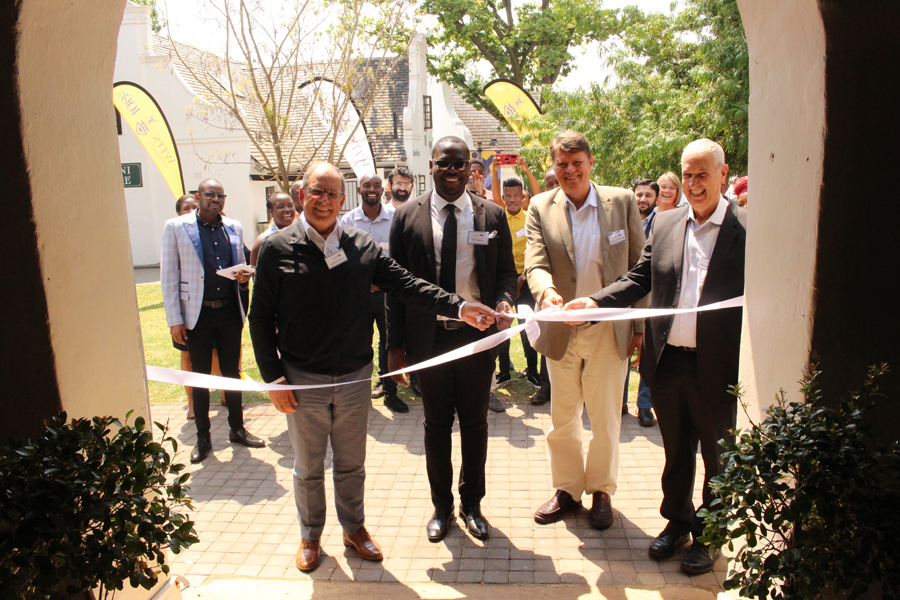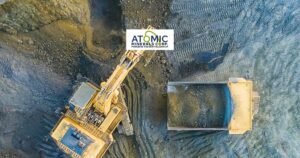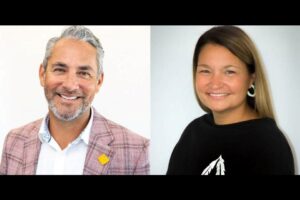“The WMI looks to specifically create the environment to foster the characteristics for research, innovation and development, alongside excellent relationships with our stakeholders”, he said.
Under the theme of ‘Turning research curiosity into 21st Century minerals industry performance, relationships and technology’, Nwaila said it could not have developed advanced technologies for the 21st Century model of mining – which included SmartMine Internet of Things (IoT), wearable technologies and sensors, safe blast imitation and optimisation and point-cloud surveys, without ongoing, multidisciplinary partnerships.
He said that through this research, innovation and development, and ongoing public-private partnerships, Wits was not only able to progress cross- and trans-disciplinary research and solutions for the mining industry but was also able to address new and emerging challenges.
This included stumbling blocks under the umbrella of environmental, social, and governance (ESG), the circular economy, mine waste, sustainable process engineering, orebody modelling and geotechnical engineering. Another challenge faced by the industry as mines continue to develop, is the question of capacity development.
“The WMI cannot stagnate, as the mining industry continues to be in flux. The research will continue to develop alongside industry, which is developing at a rapid pace,” Nwaila said. “Here at the WMI, we have a curiosity, a technical capability and determination to thrive. Understanding market realities and the management of high-risk and exploratory data-driven projects has also put us at the forefront,” he pointed out.
Industry perspective
Delivering his keynote speech on the first day of the event, diversified miner Sibanye-Stillwater CEO Neal Froneman highlighted that the Sibanye-Stillwater DigiMine laboratory at Wits was an example of one of Sibanye’s strategies to create a better mining world. “Fundamental and applied research within the DigiMine laboratory provides us with strategic intelligence on relevant digital advances to institutionalise innovation.”
Sibanye-Stillwater, which is sharpening its focus on the battery metals space, is further pursuing its 3D strategy to address forces of change within the industry. Dubbed ‘grey elephants’ – a highly probable, high impact, yet neglected catalyst – Froneman pointed out that the company was working towards finding innovative solutions to counter these challenges.
“Our 3D strategy is designed to harness opportunities, manage a complex environment, and facilitate continued growth. We intentionally find new ways to do things better,” he said.
South African Mining Extraction Research, Development & Innovation (SAMERDI)
The WMI Seminar also served as the launch platform of two new research centres established through the SAMERDI strategy.
Hosted by the WMI, the two SAMERDI Research Centres (SRCs) will focus their fundamental research on the themes of Real-Time Information Management Systems (RTIMS) and Successful Application of Technology Centred Around People (SATCAP), respectively. These are two of the thematic areas pursued by the Mandela Mining Precinct (MMP) in Johannesburg, which is administered by the Council for Scientific and Industrial Research (CSIR). The initiative is also funded by the Minerals Council of South Africa (MinCoSA) and the Department of Science and Industry (DSI).
Skills development
Referring to the ‘grey elephants’ raised by Froneman, Prof Gill Drennan, Head of the School of Geosciences at Wits, believed the answer was in skills development.
“Wits is aligning its teachings to develop with the changing world, allowing for multiple skillsets,” Drennan said. “Therefore, we are reviewing, revitalising and refreshing our curricula to allow for ongoing continuous assessment to increase learning during classroom time and enhance student motivation, combining theory and training embedded in a real-life work environment in interconnected educational ecosystems and encouraging self-directed training and nano-degrees – a certified online education programme that helps students develop specialised skills for lifelong learning,” she said.
This article was published by: Amanda Stutt
Visit the original article here



